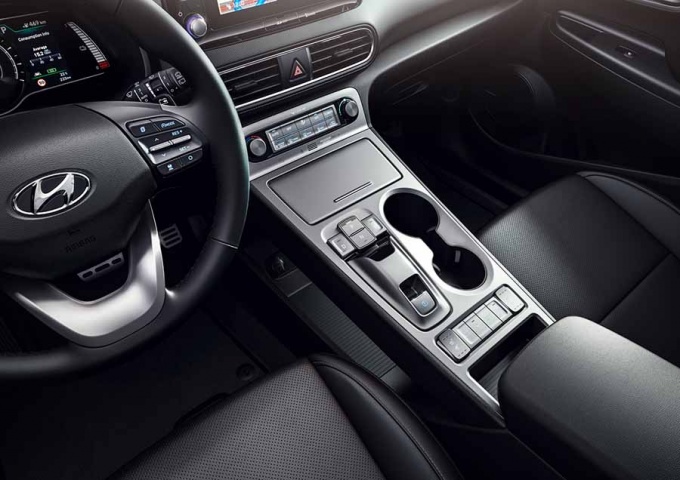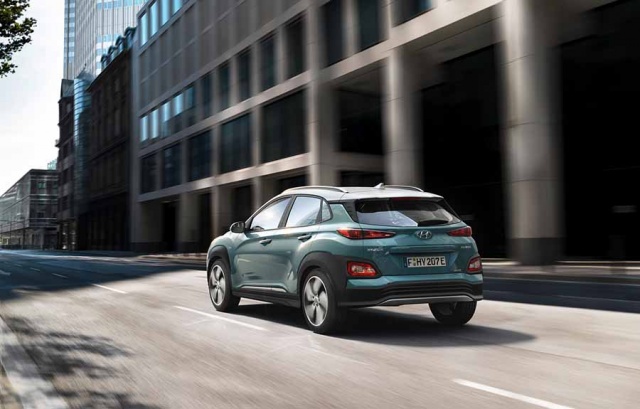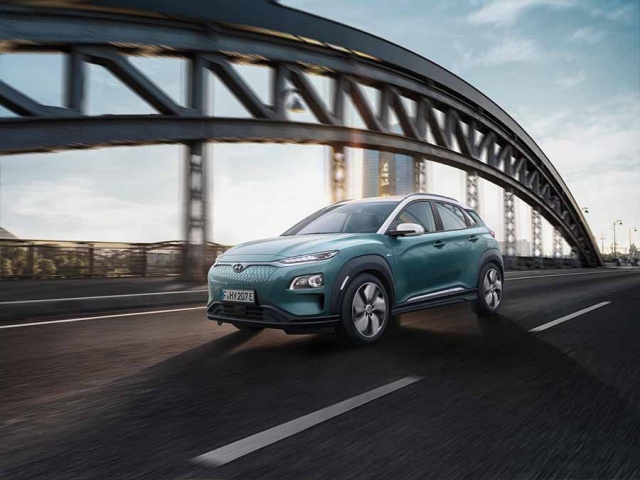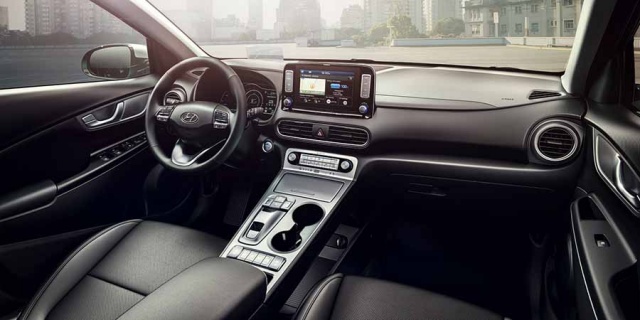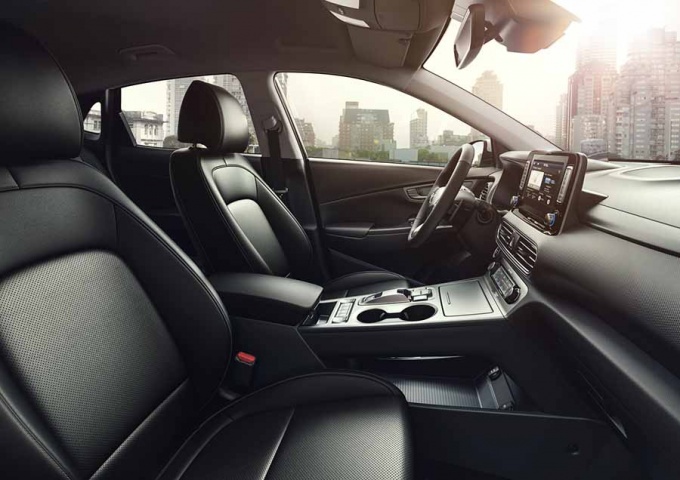What's the news?
This is the all-electric Hyundai Kona, due to be on display at the Geneva Motor Show, and following an initial tease of the vehicle a few days ago, now we now much more about the zero-emissions crossover - such as there will be regular and long-range versions with different-capacity battery packs to deliver their distance claims.
Exterior
Externally, the Kona Electric is very similar to its regular combustion-engined brethren, but there are some key differences. Such as the closed grille at the front, incorporating a hidden recharging port, and Composite Light LED front clusters with LED daytime running lights. Lateral air curtains at the front reduce turbulence in the front arches, while in said arches are a set of aerodynamically-enhanced 17-inch alloy wheels. What you perhaps can't spot from these pictures is that the Kona Electric is 20mm taller and 15mm longer than a regular model, with overall figures of 1,570mm and 4,180mm for height and length respectively.
Interior
Like the excellent Ioniq Electric, the most obvious feature here is a transmission tunnel that lacks for a gearlever, while you might also quickly spot the seven-inch digital supervision cluster in the driver's binnacle. The flat buttons for the single-speed reduction gear transmission make for a futuristic appearance, while the Kona Electric further benefits from a head-up display to keep all the relevant information in the driver's eyeline.
Hyundai says eight-way adjustable seats with three-stage heating and cooling functions will be part of the Kona Electric's specification, while luggage space of 332 litres is only 31 litres down on the Kona 4x4; and that's storing the Electric's charging cable, as without it the boot capacity climbs to 373 litres. Beyond this, a range of high-end connectivity equipment, Qi-standard wireless smartphone charging and an eight-speaker Krell sound system will form the Kona's kit list.
Mechanicals
Also like the Ioniq, the Kona Electric uses lithium-ion (Li-ion) polymer batteries, which drive an electric motor which delivers 395Nm and a top speed of 167km/h. But there are two battery options, which alter the specs from this point onwards. First up, the standard Kona Electric uses a 39.2kWh Li-ion unit with a 14.8kWh/100km consumption rate, with power of 99kW (135hp) and a 0-100km/h time of 9.3 seconds. It will go 300km on a single charge.
However, a beefier 64kWh battery increases the range to 470km, with consumption of 15.2kWh/100km. This leads to 150kW (204hp) from the permanent magnet synchronous motor and a trimming of the 0-100km/h time to just 7.6 seconds. As already specified, a single-speed reduction gear handles the transmission of power from the motor to the wheels, while there's a massive array of semi-autonomous driver assist safety systems provided on the Kona Electric. One drawback to the long-range model, of course, is charging time - the 300km Kona takes 6hrs 10mins to fully recharge on an AC socket, while the 470km model requires 9hrs 40mins via the same method.
Anything else?
"Hyundai Motor is already leading in future mobility solutions," said Andreas-Christoph Hofmann, VP marketing and product at Hyundai Motor Europe. "By launching our all-new Kona Electric, we are pushing our ambitious eco car strategy forward. It's a car of no compromise - combining an SUV body type with electric-mobility. It represents Hyundai's progressive character. With Hyundai Motor, the future is now!"


